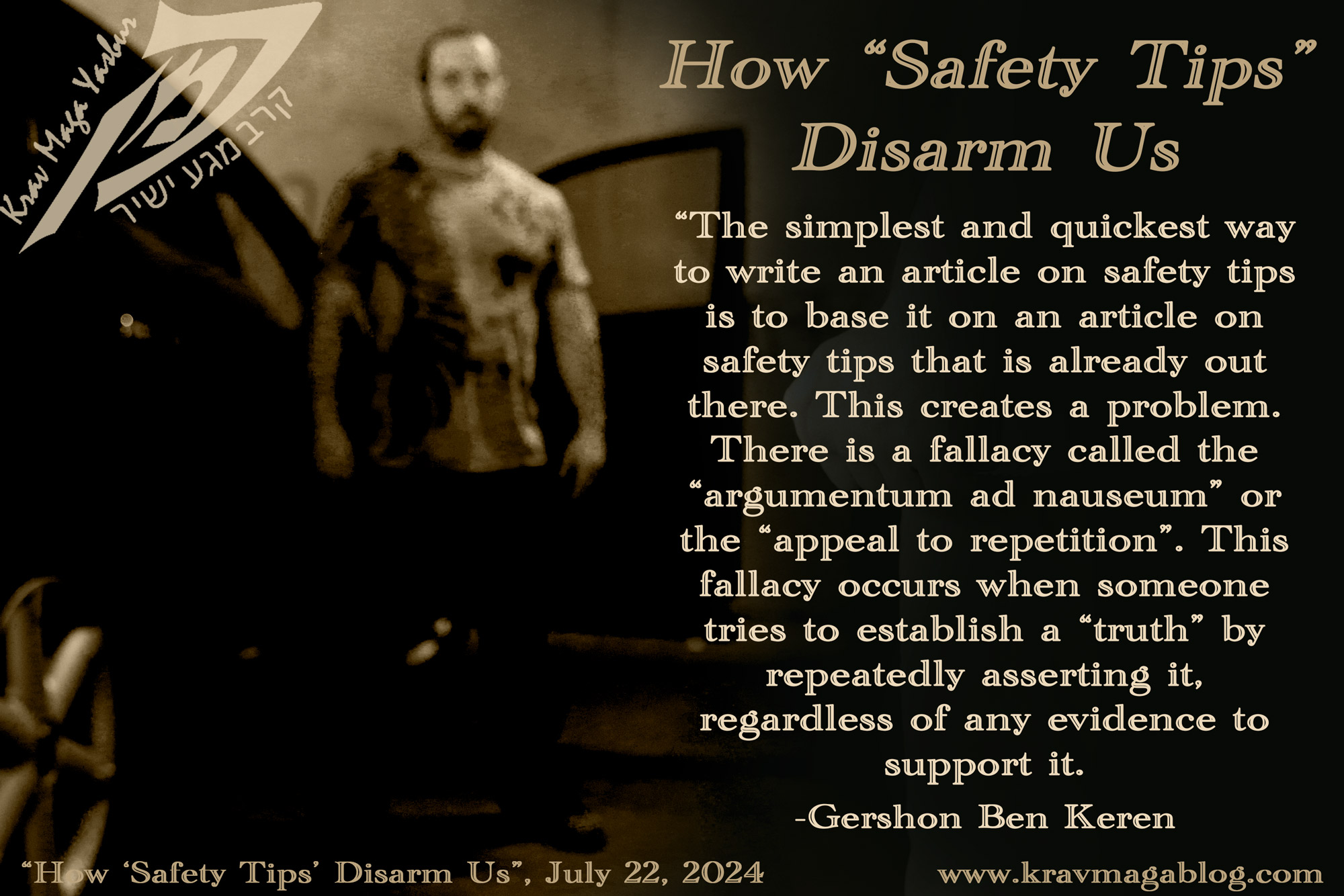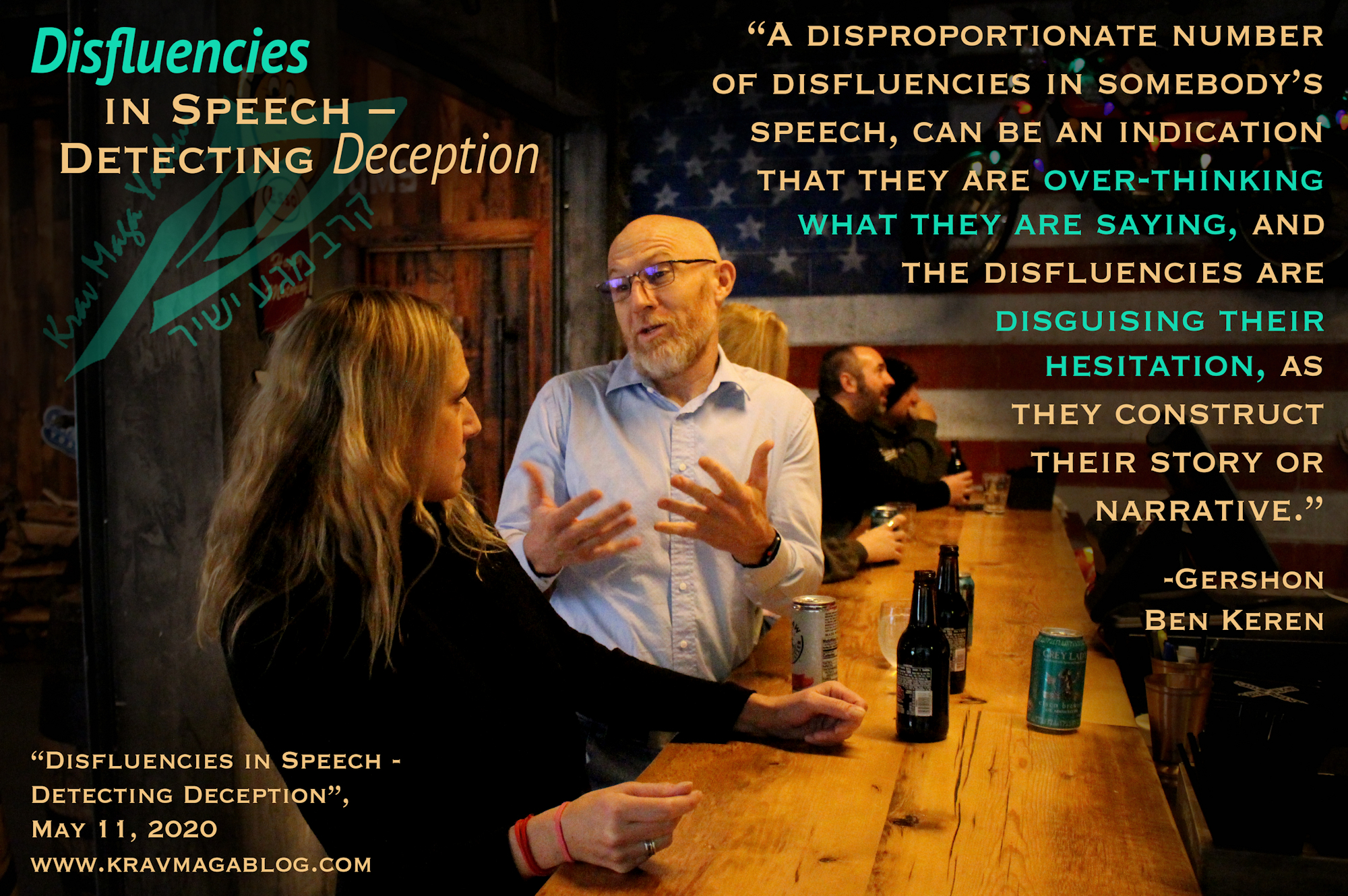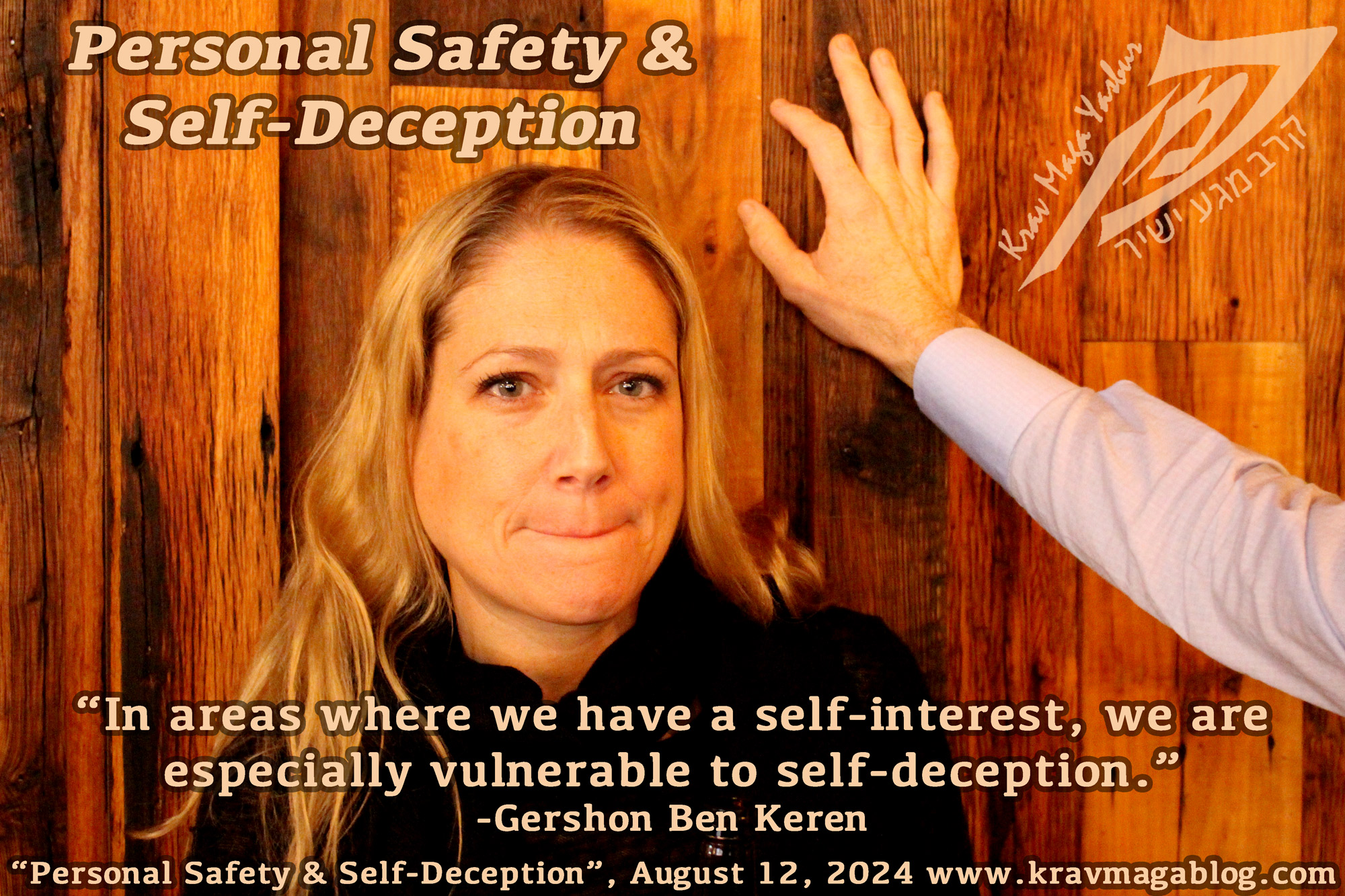Disfluencies in Speech, is an article written by Gershon Ben Keren, a 5th Degree Black Belt in Krav Maga, who teaches Krav Maga in Boston, MA. He has also authored three Amazon best-Selling Books on Krav Maga.
Although Forensic Linguistics, has been around for a relatively long time e.g. the trial of Derek Bentley in 1953, centered around the meaning of the statement, “let him have it”, and whether it was meant as an instruction to an armed accomplice to hand over his weapon to the law enforcement officers present, or whether it was in fact meant as an idiom (a phrase that doesn’t have any direct meaning derived from the words themselves), with the intent being for the accomplice to start shooting, etc. It was not until 2008, that the UK legal/forensic system properly formally recognized the role of forensic linguistic evidence, after fake text messages were identified to have been sent from Jenny Nichols’ phone after she’d been murdered i.e. author attribution could not be tied to her, based on the structure, format and word use of previous messages, and it was in fact her killer who had been sending the messages; he started doing this after he was first identified as a possible suspect. Unfortunately, we are not great at detecting deception in speech in real time; computers are actually much better at it than we are, because they can pick up on irregularities, etc. that our brains naturally don’t process as part of the way we join up and understand speech i.e. there are certain things that we naturally filter out. However, in saying this, if we understand some of the things that people do to cover up or distract us from the truth, then we may have a better chance of identifying them when we have a suspicion that somebody might be trying to deceive us. It is much easier to detect deception in the written word, or even somebody’s underlying emotional intent that is different and not necessarily obvious from what they have written, and there is some great software out there that does this, such as the Dictionary of Affect and Language (DAL); if you ever want to find out what somebody is really thinking, feeling and saying in a letter or email you’ve received, this tool will give you some interesting pointers. However, in the spoken word there are also clues if we can pick up on them.
Our brains are exceptionally good at filtering out what are known as “disfluencies”, these are the ‘ums’, ‘uhs’ and ‘mmms’ that are often peppered throughout our speech. This happens because they are not important for interpreting the meaning or the pragmatics of what somebody is saying. In normal speech, we subconsciously ignore them because they would interrupt the rhythm of speech and make it harder for us to understand the structure of a phrase or sentence. Imagine reading a sentence with several disfluencies in them; it would be laborious as you went through the sentence, picking out and separating the meaningful words from the rest. However, a disproportionate number of disfluencies in somebody’s speech, can be an indication that they are over-thinking what they are saying, and the disfluencies are disguising their hesitation, as they construct their story or narrative. “Normal” language is created and processed largely subconsciously i.e. we might not be aware of exactly what we are saying, until we hear ourselves saying it. In a conversation, as we listen to what somebody is saying, we may have in our head an idea of the content that we want to respond with, but the word choice, etc., occurs more as we are expressing that idea, as opposed to a carefully constructed, pre-thought out statement. This is why when we sometimes say something, and reflect on it as we are saying it, or just after, that we have to tell our listener(s), “that came out wrong”, “that wasn’t what I meant”, etc. When somebody is trying to deceive us, they want to make sure that everything comes out right, and nothing could be misinterpreted. To do this, a person might practice and rehearse what they are going to say, like a polished salesman who will try to remove all disfluencies (our brain will often recognize such speech as being abnormal – but not tell us why), or if they are creating the lie on the spot, find themselves increasing the number of disfluencies as they create their lie.
However, not everybody’s baseline for disfluencies are the same e.g. an introverted person who is normally quiet during conversations, and is not so “practiced” at speaking, may by default have a higher number of disfluencies in their “natural” speech than a more extroverted individual, who has a greater experience of speaking and participating in conversations. If somebody is being put under pressure in an interview or interrogation, a higher level of anxiety, might introduce more disfluencies. The degree to which disfluencies exist in the speech of those with certain personality disorders may play a part not in deception per se, but in trying to understand and process the emotional content of words. Those individuals with Psychopathy tend to have a higher number of disfluencies in their speech. One reason for this is due to the way they process emotions. Johns and Quay (1962) describes that when psychopaths process emotions they “know the words, but not the music.” i.e. they can cognitively understand what another person is feeling, but they don’t have an emotional response to it. This means that when they are trying to have a conversation which contains emotional content, they must process all of this consciously, whereas most of us will process the emotional part i.e. the music, subconsciously. This results in a higher number of disfluencies in their speech; the deception here being the fabrication of emotion(s), rather than meaning.
Whilst identifying disfluencies in speech may at first appear a useful tool in identifying deception, the context, and the individual are also important components. Without considering these, we may find ourselves making snap judgements that prove to be incorrect. Identifying increased disfluencies in the speech of psychopaths may help us identify them more easily, especially when we are often disarmed by their charm, etc. We are also at a time with social media where disfluencies can be identified in the written word. We may not be aware of it, but certain platforms record our deletes and edits of the posts we write, as a way of identifying disfluencies. Their goal? To get at the truth behind what we are saying.
0 COMMENTS















